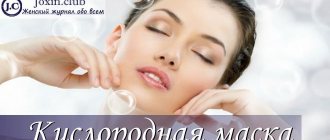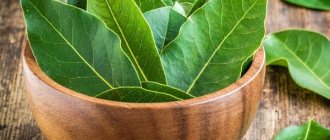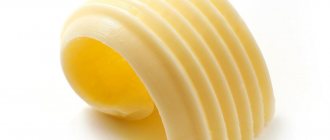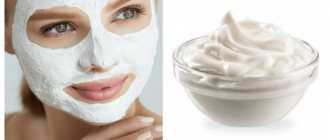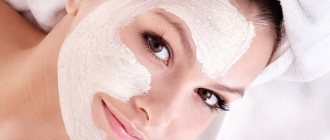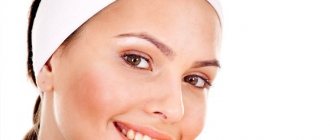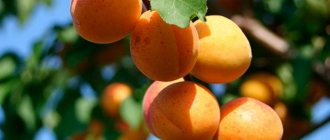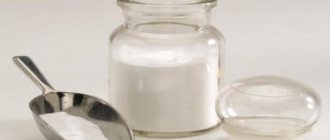Laurel is highly valued not only as a spice in cooking. It is also widely used in cosmetology. And both in home remedies and in the cosmetic industry. Thanks to its beneficial substances, bay leaf slows down skin aging and promotes its rejuvenation.
Read the article to the end and you will learn how to use bay leaves in homemade cosmetics. Recipes for skin care products, beneficial properties and features of use: everything in order.
Composition and beneficial properties
The benefits of bay leaves for the human body are manifold:
- The spice contains many active components such as -pinene, -pinene, myrcene, limonene, linalool, methyl chavicol, neral, -terpineol, geranyl acetate, eugenol and chavicol. These compounds have antiseptic and antioxidant properties.
- Fresh bay leaves are a rich source of vitamin C. Ascorbic acid is one of the powerful natural antioxidants that fights free radicals, preventing premature skin aging. Vitamin C has immune properties, wound healing and antiviral effects.
- In addition, all parts of the plant are rich in vitamin B9 (folic acid). 100 g of bay leaf contains 180 mg of this vitamin, which is about 45% of the recommended daily intake. Folates play an important role in the synthesis of nucleotides and DNA replication, and their intake during pregnancy prevents the development of neural tube defects in the newborn baby.
- Bay leaf is an excellent source of vitamin A, a natural antioxidant that is essential for maintaining good vision, healthy mucous membranes in the throat and scalp, healthy skin and healthy hair growth.
- The spice is a good source of vitamins such as niacin, pyridoxine, pantothenic acid and riboflavin. These B vitamins help synthesize enzymes, strengthen the nervous system and regulate metabolism in the body.
This leafy spice is an excellent source of minerals such as:
- potassium, which is an important component that regulates water balance in the body and controls heart rate and blood pressure;
- manganese and copper, present in the body's antioxidant defense system, being a cofactor for the enzyme superoxide dismutase, which is involved in neutralizing oxygen free radicals;
- Iron, necessary for the production of red blood cells, serves as a component of the respiratory enzyme cytochrome oxidase.
A tablespoon (2 g) of chopped bay leaves contains about 5.5 calories. It also includes:
- 0.1 mg manganese (7% DV);
- 0.8 mg iron (4% DV);
- 108 ml of vitamin A (2% of the daily value);
- 1.3 g carbohydrates;
- 0.1 g protein;
- 0.5 g fiber.
Bay leaf hair rinse for lice
The concentrated components of the plant will help get rid of lice and nits no worse than any professional shampoo. The amount of use varies individually; for some, one time may be enough, while others need 3-4 to get results. It is also recommended to use it as a preventative measure. To prepare an infusion of laurel for parasites, you need to take
- 40-50 laurel leaves and pour 2 glasses of water
- Boil until the liquid has evaporated by half
- let it brew and filter
- bay leaf tincture for hair is rubbed over the entire hair area, slowly, massaging the head, as well as the hair along the entire length
- when the curls are dry, comb them
A decoction of bay leaves is beneficial for quickly dirty hair. And for this case there is a recipe. 1 tablespoon of crushed laurel leaves, if your hair is long, then take 2 tablespoons. Place 1 liter in boiling water. Leave to simmer on low heat for 5 minutes. Next, you need to let the broth cool and filter. Use as a hair rinse. We do rinsing for 4 weeks, a month off. Then we repeat. If done regularly in such cycles, the curls will look shiny and healthy. There is also a recipe with apple cider vinegar.
- mix 5 bay leaves and one hundred grams of vinegar and let it brew for a day.
- Apply the prepared infusion to the hair roots. This recipe helps not only in controlling the sebaceous glands, but also in combating gray hair.
Shining, luxurious hair in 4 weeks!
With plant-based hair care product PLATINUS V COMPLETE restoration of hair growth - in 100% of cases!
More details
Rinsing your hair with bay leaves should be used in moderation. Do not overdo it in case of heart failure and hypertension, as laurel is concentrated and increases blood circulation. You should continue until the problem for which you prepared the decoction is solved. As with any treatment, it is not recommended to overdo it. Laurel contains highly concentrated elements. Therefore, an overdose can have negative consequences, both for the hair and for the body as a whole. Pregnant women and women during lactation should refrain from using this plant due to its strong concentration.
Bay leaf hair rinse is recommended to be used in combination with regular cosmetics. It is worth consulting your doctor if you have allergic reactions to some components. If the situation is severe, then use it together with medicinal cosmetics until you get results.
Principle of action on the skin
The high content of antioxidants makes bay leaf in cosmetology an effective remedy against various dermatological problems. People often call laurel a natural antibiotic, because it contains the appropriate elements and phytoncides, which have many positive effects on problem skin:
- kill bacteria;
- relieve redness, soothe irritation;
- disinfect;
- rejuvenate;
- eliminate areas of acne and existing inflammation;
- tone;
- activate metabolic processes and respiration inside cells;
- stimulate cellular renewal;
- reduce swelling;
- increase the level of collagen produced.
Reviews
Men and women who have used herbal medicine share their experiences and information about the effects that bay leaves have had on acne on forums. Reviews even inform that baths with the plant are useful for eliminating skin rashes in infants.
It is also reported that the prompt use of a decoction at the initial stage of the appearance of a pimple suppresses its development, and in hot weather, tonics and lotions reduce the secretion of fat and dry out small rashes.
Contraindications
Crushed bay leaf is safe to consume orally up to 3 g per day for 30 days. It is not safe to swallow bay leaf whole; it is not absorbed and can cause suffocation by getting stuck in the laryngopharynx or disrupt the integrity of the intestinal mucosa.
Read also: Juice for facial skin
Children, pregnant and lactating women should avoid consuming the spice to avoid unwanted reactions to this spice.
Side effects from taking bay leaf include:
- shortness of breath, feeling of tightness in the chest;
- contact dermatitis;
- facial skin eczema.
People with type 2 diabetes should avoid consuming bay leaves because the active ingredients in the spice lower blood glucose levels.
Patients should exclude bay leaves from their diet approximately 2 weeks before surgery, as it reduces the activity of the central nervous system, which can have a number of unpleasant side effects in combination with medications administered during anesthesia.
Historical reference
The medicinal properties of the plant have been known since ancient times. Laurel laurel was a fairly popular plant in ancient Rome. The Romans called it the sacred tree. Laurel is an attribute of the god of light - Apollo. Legends say that once the god of light was unrequitedly in love with the beautiful nymph Daphne, who hated men. Tired of the obsessive pursuit of her gentleman, Daphne turned to her father, the god of the river, so that he would change her appearance. In this way, she hoped to avoid Apollo's addiction. The father fulfilled his daughter's will and turned her into a laurel tree. The God of Light retained his feelings - in memory of her, the laurel tree has since become sacred.
Methods of using laurel
At home, you can use the spice in various ways, adding it to tonics, lotions and masks. These remedies have a targeted effect on the problem (bacteria, sebaceous gland walls, blood vessels, inflammatory foci) and cope well with it.
Decoction
The benefits of using bay decoction are as follows:
- Helps balance and restore the natural pH level of the skin and improve complexion;
- dissolves dead cells and triggers skin regeneration;
- reduces the visibility of pores;
- helps eliminate acne spots, heals scars and smoothes the skin.
To prepare the decoction you need:
- Place 5 dried bay leaves in a saucepan, add 2 cups of water, cover with a lid and bring to a boil.
- Once boiling, remove the lid from the pan and continue to cook for about 2 minutes, then pour the broth into a large bowl.
Use of the decoction:
Bend over the bowl, covering your head and bowl with a large towel. You need to sit over the steam bath for 10 minutes. This procedure helps open the pores and thus makes it easier to remove blackheads.
Baths
Bay leaf infusion is added to a hot bath, used as a remedy for acne on the body.
To prepare the infusion, you need to brew 10-15 fresh or dried laurel leaves with boiling water. Leave to infuse for about 30-40 minutes. Strain before using in the bath.
Lotion
Using antiseptic lotions is another great way to get rid of acne effectively. To prepare it you need:
- Pour 100 ml of water into a saucepan and add 10 bay leaves.
- Heat the mixture and let it simmer for 5 minutes. Cool, strain and pour into a dark glass jar or bottle.
It is recommended to use the lotion daily in the morning and evening: the cleanser is applied to slightly damp skin with slow circular movements. After this, the product must be washed off. Once a week, instead of lotion, it is recommended to use a scrub to remove dead cells and remove the keratinized top layer of skin, which prevents the cleanser and its active components from being absorbed into the skin.
Tonic
Laurel tonic will moisturize your facial skin and make it silky.
To prepare the product, you need to bring a glass of water to a boil and add 4-5 tsp. laurel essential oil. After complete cooling, it is recommended to pour the tonic into a dark glass jar.
Apply the product to the face with a cotton swab or light patting movements with your fingertips. To achieve the best effect, it is recommended to use the tonic every day before bed.
Will it always help?
Acne develops in stages. First, the sebaceous ducts expand, after which the production of sebum increases. This fact contributes to increased oiliness of the skin, on which dust and dirt particles also settle. They clog pores and ducts, the secretion does not have the opportunity to come to the surface, forming a favorable environment for the formation of blackheads, and then the proliferation of bacteria. This activity causes inflammation, during which pus collects in the pimple cavity.
Cherry laurel has a certain range of effects on the skin; accordingly, bay leaf against acne on the face helps in the first stages of acne. The plant effectively copes with open and closed comedones due to its ability to optimize the functioning of the sebaceous glands. Also, laurel-based products can be used at the initial stage of inflammation, but with purulent pathological processes, potent drugs are required.
Bay oil
Thanks to its antifungal and antibacterial properties, laurel essential oil has a number of benefits for problem skin:
- treats cystic acne;
- cleanses the skin surface from excess sebum and impurities;
- reduces facial skin sensitivity;
- removes scars from deep acne.
Read also: What does the face look like after peeling and what care is required?
Before using the oil, you need to clean and moisturize your skin. Then you need to drop the oil onto your fingertip and treat every pimple, rash or redness on the skin. It is recommended to use this product before bed for best results.
Compress
Bay leaf decoction can be used as a compress to treat small pimples and to remove excess sebum. Warm compresses are suitable for dry and sensitive skin.
To make a compress to treat acne, you need to moisten a piece of cotton cloth in the broth and apply it as a lotion to the problem area of the skin for 3 minutes.
Tincture
Bay leaf tincture has a calming effect on the skin, relieving inflammation. The effect of its use exceeds all expectations.
To prepare the tincture, you need to take a small jar and put 200 g of bay leaves in it. If the leaves are used dry, they can be crushed by hand, and fresh leaves can be cut. You need to pour vodka into the jar, close the lid tightly and put it in a dark, cool place for infusion for 3 weeks. Use the infusion to wipe problem areas of the skin with acne. It is advisable to carry out this procedure 2 times a day.
You can also prepare a tincture that not only treats acne, but also helps regulate sebum production and balance the pH of the skin. To prepare, place a bay leaf in a glass, add hot water (80°C) and leave for several hours or overnight. Then the infusion should be filtered, poured into a dark glass jar and refrigerated. This tincture is used to wipe the face or the most problematic areas 3 times a day.
Ice
Ice is an effective remedy in reducing redness and inflammation at the site of squeezed pimples. Ice made from bay leaf decoction is beneficial for all skin types.
Before using ice cubes, you need to wash your face and pat it dry with a towel. Wrap ice cubes in a clean paper towel and place on the pimple for a minute. Repeat the process after 5 minutes. It is better to use ice cubes before bed to constrict blood vessels and prevent unwanted inflammation.
To prepare cosmetic ice, you need to take 10 large bay leaves and add a liter of water. Bring water with bay leaves to a boil over low heat. Remove the broth from the heat, cool, pour into molds and freeze.
Should you use home remedies to treat acne*?
Tonics, masks, lotions containing bay leaf extract can improve the condition of problem skin, but they are not able to completely get rid of acne. Regardless of the etiology, the disease requires long-term drug treatment, which can only be selected by an experienced specialist. When choosing treatment tactics, the characteristics of the course of the disease, age, etc. are taken into account. Therefore, you will not be able to independently find a miraculous home recipe that will help you forget about acne once and for all.
Face mask recipes
Bay leaf is used for many masks.
For acne
Since bay leaf has powerful antibacterial and astringent properties, it is an excellent home remedy for treating acne. Take:
- 5 dried bay leaves;
- 4 tbsp. l. French green clay;
- 1 glass of water.
Boil water and add bay leaf. Let it brew for 10 minutes. Cool, discard the leaves and pour the liquid into the clay. Mix all ingredients until creamy and pour the resulting emulsion into a dark glass jar.
Apply the mask to your face and leave for 15-20 minutes. Then rinse with warm water.
From blackheads
Being a highly absorbent substance, clay works like a magnet, drawing out excess sebum and dirt from the skin. This effect is enhanced when combined with bay oil.
- 2 tsp. blue clay;
- 2 tsp. apple cider vinegar;
- 1 drop of bay oil;
- 1 drop of lavender oil.
Mix the clay and vinegar in a bowl to form a thick, paste-like consistency. Add essential oils to the paste and stir.
Read also: Folk remedies for wrinkles
Apply the mask in a thin layer to clean skin, avoiding areas around the eyes and mouth. Let dry for 5-15 minutes. Rinse with warm water and apply moisturizer.
For wrinkles
This bay leaf face mask against wrinkles tightens the facial contour well and is suitable for any skin type. Have to take:
- 15 lava leaves;
- 30 g boiled water;
- 1 egg white;
- 2 tbsp. l. olive oil;
- 10 g of burnt alum.
First you need to prepare a decoction: bring water with bay leaf to a boil, remove from heat and cool. All ingredients must be mixed until smooth.
Apply the mixture in a thin layer onto gauze, which is then placed on a clean face. Leave the mask on for half an hour, then rinse with warm water.
For pigment spots
A brightening mask using a combination of oils, including laurel, will not only get rid of age spots, but also rejuvenate and tighten the skin.
- 5 drops of frankincense essential oil;
- 6 drops of geranium oil;
- 6 drops drops of lemon oil;
- 5 drops of bay oil.
Mix all ingredients together and pour into a dark glass jar. Shake well before use and apply the mask to problem areas of the face for 15-20 minutes, then wash with cool water.
For oily skin
The antioxidants present in bay leaf boost melanin production, help flush out toxins, and reduce acne.
- ripe avocado;
- 1 tbsp. l. organic raw honey;
- 1 tbsp. l. aloe vera gel;
- 1 tsp. vitamin E;
- tsp lemon juice;
- 3-5 drops of bay essential oil.
Mix all ingredients until smooth, and then apply the mask generously onto the skin of the face and neck using massaging movements. Leave for 15-25 minutes, then rinse with warm water.
For dry skin
Another sought-after property of bay leaf is its ability to soften and moisturize the skin. A simple moisturizing mask looks like this:
- 2 tbsp. l. coconut oil;
- ripe banana;
- 3 drops of laurel essential oil.
Mix all the ingredients together and apply the paste to a clean face. Leave the mask on for 20 minutes, then rinse thoroughly with cool water.
Banana has an antioxidant effect, while laurel oil stimulates the skin regeneration process.
Steaming
You can also use a natural antiseptic when preparing the skin for applying a mask. To do this, prepare a decoction from the leaf, which will open the pores for better cleansing and a more effective effect of medicinal products.
For a liter of boiling water you will need several leaves of the main ingredient. The product is placed on the fire, and as soon as it boils, the pan is removed from the stove and a steam bath is taken with the broth. To do this, the face is placed above the steam, and the head is wrapped in a blanket on top. The procedure time should be at least a quarter of an hour.



